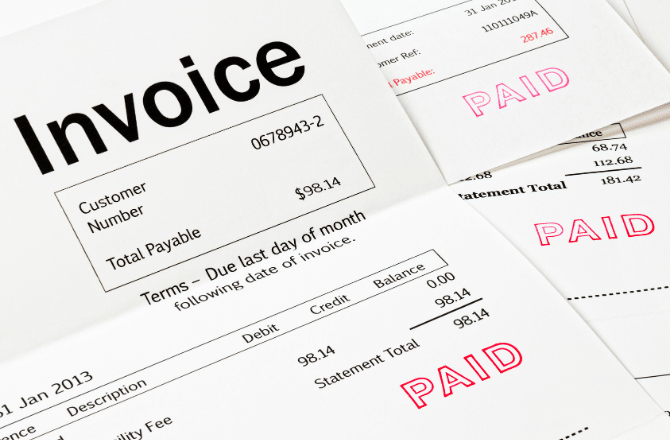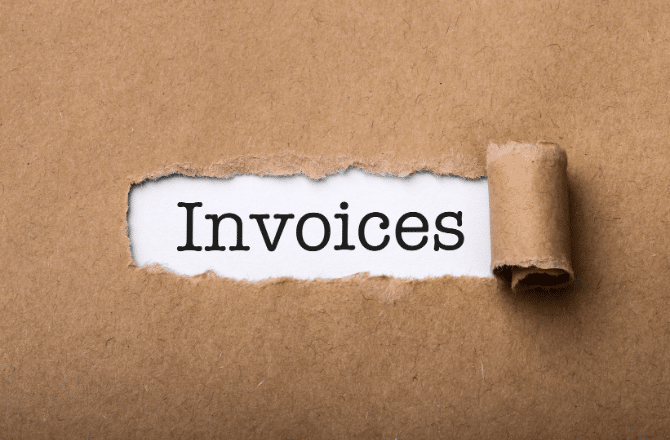How to Collect More Accounts Receivable [9 Tips]
In a perfect world, all your clients would pay their invoices as soon as they received them. This utopia doesn’t exist for most businesses, though, and trying to collect 100% of your accounts receivable isn’t always easy.
But when the lack of collections limits your cash flow, it makes it harder to cover your operating costs. This causes many small to medium-sized businesses to go into debt or close down entirely if it goes on for too long.
When your customers take too long to pay their invoices, it’s not that your business is struggling to be successful. You can have plenty of work. The problem is that you’re in a bind — called a “cash crunch” in the business industry — and you need your clients to pay their bills.
Unpaid invoices tie up a lot of accounts receivable. When you have thousands of customers who pay regularly, it’s easier to handle those who take 60+ days to send in their payment. But for smaller businesses, it’s harder to take that hit.
As your unpaid Accounts Receivables add up, it can significantly hinder your working capital. To free up some of this money and improve your business’s ability to cover overhead, you need to maximize your collection methods.
These nine tips will help you boost your incoming revenue, lower your outstanding Accounts Receivable, and increase your cash flow!
1. Upgrade Your Software
When you’re using outdated software, you’re losing out on some of the innovations in accounts receivable (AR) technology. AR automation optimizes your invoicing and payments processes, saving you time and paying for itself.
Today’s automated software streamlines every financial transaction your company has, both incoming and outgoing. The ultimate goal is to get you paid for the goods or services you provided.
What to Look for in Accounts Receivable Software
The demand for better, all-inclusive programs means that you have many options to choose from.
When you’re narrowing down the best AR software for your business, it should at least include these characteristics:
- Accessible by multiple users – Your AR program needs to be highly secure. But if you’re the only one who can access it, your job becomes even more challenging than before.
The software you choose should have multi-user access under your control. When you invite others to use the program, you set up their account and control what they see.
Some programs track each user and monitor what they do while they’re in the system. Before you buy a program, find out how many users it supports for free and how much it costs to add more as you grow.
- Cloud-based – Adding your business to the cloud makes it easy for you to access your information anywhere you have internet. The majority of computer programs today are cloud-based. The key is to look for those with mobile and offline access as well as backup and security features.
The mobile version likely won’t have all the capabilities of a desktop program, but it should give you the ability to perform the main tasks. Some software programs have different apps for employees and owners/managers.
Check to make sure the software works on your platform before you buy. Look at the consumer reviews and security protocols, too.
If you have multiple businesses, the last thing to look for is a software program that lets you integrate them all. Everything you’ll need for each company is in the same place, with each entity having its own compartment.
Related: Simple Small Business Solutions You Actually Need
2. Get to the Bottom of the Problem
Once you’ve merged your old content into your new software program, run an aging report.
This breaks down every client you have and how frequently they pay their bills. It makes it easy to see, at a glance, who your problem customers are.
Your accounts receivable aging report shines a light on an angle you might not have noticed otherwise. If the report shows that you have a lot of outstanding accounts, your business is in a high-risk category.
You could solve the problem by eliminating or limiting credit terms to those risky clients. It might also be a matter of adjusting your accounts receivable collection processes to make them more efficient.
But first, you need to run the aging report and analyze it.
From there, you can decide if:
-
- You have a significant turnover concern that requires a total overhaul in your policies
- Or just a few customers that need addressing
Read: SMB Guide to Invoice Factoring.
3. Consider Your Credit Terms
As the business owner, you are the one who gets to decide your credit policies. Large companies have strict payment terms and requirements you’ll have to conform to if you want to work with them. However, when you’re working with other businesses, you get the last say about how you collect your money.
Now that you’ve analyzed your AR aging, think about the credit terms you’re currently using.
Are they working for your business, or do you need to do some tweaking?
If you’re not sure, consider these basic questions:
- Do you charge penalties on late payments after a certain point? Are those penalties working? If the penalty isn’t strict enough, clients will wait to pay and tack on the small late fee. If it’s too strict, though, you could upset a lot of customers.
- How do your clients get the right to buy on credit? Do they automatically expect it?
- What process do you use to decide how much credit to extend to each client? Do you need to lower your credit cap and let your clients know they can earn their way to higher limits?
As you’re designing or adjusting your terms, think about how other businesses give you credit. Most places don’t offer you carte blanche to order whatever you want, no limits, and pay your invoice as you please.
It’s perfectly acceptable and expected to have a screening process before giving a client a credit cap. You can adjust these terms and methods as you see fit.
4. Automate Your Reminders
It’s never too soon to start reminding clients they have a payment coming up. However, this should be an automated step that your billing program does for you, not something you need to remember to do yourself.
To get this process started, create an email template with a friendly payment reminder scheduled that sends out before the due date. You can choose the reminder date and frequency.
For example, for clients who receive monthly invoices, a 14-day, 7-day, and 3-day reminder email is a typical process. Some software programs allow the client to determine their reminder schedule.
Whether you plan reminder emails or not, one automated process that is essential is the due-date invoice. This is a simple template that lets the client know their bill is due that day. Include a link in the email to make it even easier for them to click and pay.
5. Jump On Past-Dues
The longer your past dues stay unpaid, the less likely it is that you’ll ever see that money. This isn’t being cynical; it’s an unfortunate part of business.
Sometimes, a client waits to pay their bill until the lender is willing to settle for less to get the bad debt off their books. In other cases, the client adopts a “sit back and wait” attitude in the hopes that the other party will write off their bill completely.
The best way to keep these slow-to-pay clients from getting to that point is to jump on your past dues ASAP.
What is your past-due procedure?
Do you feel like you’re “annoying” your client by calling them to collect what they owe you?
This is a familiar feeling with people who hate to ask for money, but it’s a tried-and-true way to increase your collections.
Adjust your collections process to focus on newly overdue accounts. Pay attention to them first. Then start making phone calls to the -60 and -90+ late clients.
What should you do for those who showed up on your aging as frequent flyer clients who are always late?
Consider sending them a written notice that they have to earn a credit privilege back by paying their outstanding invoice.
Increase your communication policies, even if it means hiring someone to follow up on these. The expense will likely pay for itself — especially if you hire a freelancer or independent contractor to handle your accounts receivable management.
6. Work With an Accelerated Invoicing Company
Small and medium businesses are often victims of the ebb and flow of seasonal clients. Most industries have peak periods of high sales, followed by dry, slow seasons.
Unless you’re very disciplined at setting aside money during the busy times to carry you through slow seasons, it’s easy to come up short on cash. If you need working capital fast, a loan isn’t your only option. In fact, it’s not even a good business decision.
Why take out a loan and end up with a long-term monthly payment to solve a short-term problem?
Instead, look into alternative financial solutions, such as accelerating invoicing.
Accelerated invoice payment companies like Now do the work for you. For a small upfront fee, the company pays you the amount on your invoice. They then collect the money from the client directly.
The company will run a credit check on the clients before accepting the invoice. If they approve the client, the risk of nonpayment goes to the invoicing company, not you.
It’s an easy way for you to get the money you need upfront without the expense of a high-interest or long-term loan.
Related: Why the Difference Between Net Profit vs. Gross Profit is Important for your Business.
7. Spread Out Your Client Base
Diversifying is a huge help when it comes to improving accounts receivable receipts.
Large businesses often use the full 90- or 120-day payment plan cycle before they pay their vendors. Yes, it’s a big sign of success when working with major corporations, but these shouldn’t be your only clientele.
Include small businesses, too, because they are more likely to pay their bills upon receipt.
As with any portfolio, diversification is the key. Try to spread out your client base to include businesses of all sizes.
8. Increase Your Payment Options
Making it easier for your clients to pay you is another smart strategy. While money is money, there are some forms of payment that are becoming obsolete. Chances are, you’ll rarely see a client paying with cash anymore.
A lot of bigger companies still pay via check or automated clearinghouses. But more and more clients prefer the opportunity to click and pay their bills online. If your payment terms include various methods, this makes it more likely that the client will pay you when they get the invoice.
Use a secure software program that allows them to save their preferred payment method. By adding options like PayPal and ApplePay besides debit and credit cards, you simplify the process. To make it even easier, see if your software offers the ability to take automated payments each month.
9. Use an Outside Collections Agency
If all else fails, an outside collection agency is a way to collect on old debts. It shouldn’t take a threat to get a client to pay you, but if that’s the only way to get it done, you have that option.
Many people are more apt to pay their bills if they know you’ll turn their unpaid invoice into a collections agency.
The concern of some business owners is that once they use this method of collecting their bills, the client won’t want to work with them anymore. But if they left your invoice unpaid long enough to go to collections, the odds of them returning is already slim.
Working with a professional agency takes the stress off of you and your employees. The debt collection agency’s employees are the ones who call the delinquent customers. If the client is irate, your staff doesn’t have to deal with the stress of their anger.
Those who have training in collecting old debts know how to get clients to pay. Between the threat of ending up with a poor credit score rating and the agency’s knowledge of dealing with clients, you have a better chance of seeing your bill paid.
With a collection agency taking care of your past-due accounts, you can turn your attention to attracting new customers.
Conclusion
As a business owner, your Accounts Receivable is your bread and butter. You wouldn’t sit around and wait for your meal to get hard and moldy, and you shouldn’t wait for your clients to pay, either.
From changing your processes to using an accelerated invoice company to get cash fast, these nine tips will increase your AR revenue significantly.
See if you qualify for accelerated invoice payments by setting up your NowAccount!






